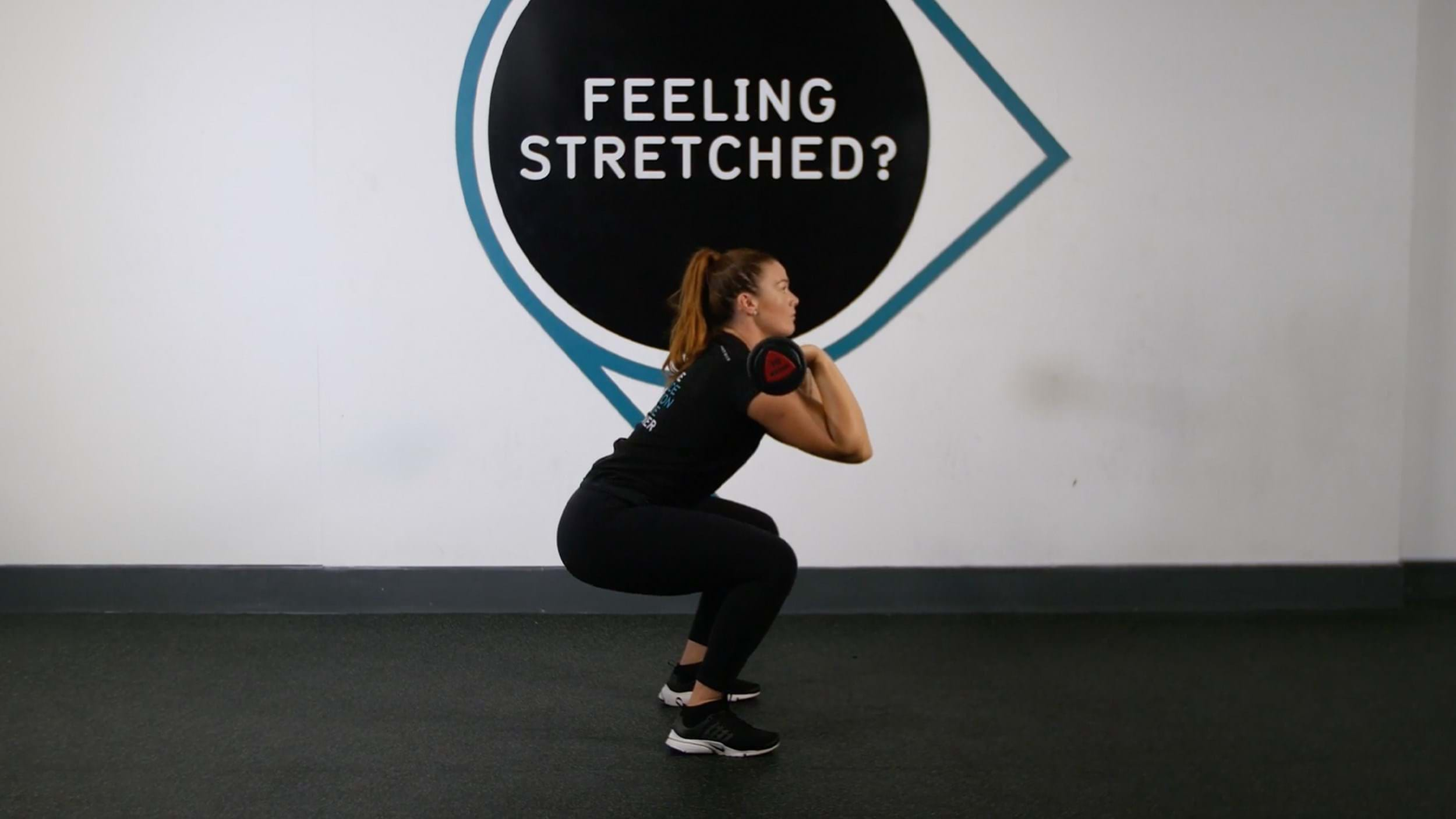Front Squats
What Is A Front Squat?

The barbell front squat is an intermediate to advanced variation of the squat that involves the barbell being held across the anterior delts (front shoulder), just under chin and close to the neck. Like the barbell back squat, it's typically set up in the squat rack.
Like all squats, this targets the hamstrings, glutes, calves, and quads, but the front loading of the barbell can help lifters to reach greater depth which can work the quads to a greater degree. The core and upper back muscles are also recruited to ensure stability throughout the movement.
Check out some other squat variations: sumo squats, goblet squats, split squats, hack squats, Bulgarian split squats
Commonly Asked Questions On Front Squats
Front squats primarily work the lower body muscles, including the glutes, hamstrings, calves, and quads. The bar placement of the front squat also requires a great level of stability and coordination to ensure the squat is performed with optimal form.
The front squat, like all squats, is a great tool for building lower body muscle mass. Compared to other squats, it may allow for greater quad activation making it a good variation for anyone wanting to focus on their quadriceps.
This exercise also helps with core strength and posture, and can improve shoulder and wrist mobility.
A front squat is not necessarily better or worse than a back squat. If you're looking to test or improve overall strength, the back squat may be a better option as it can be loaded heavier. However, there are additional benefits to the front squat which we've outlined above. Incorporating both the back squat and front squat into your exercise programme is a great option!
Front Squat Tips
The front squat is a challenging movement that involves an unusual barbell placement, and it can feel awkward and uncomfortable for some people as it requires good shoulder and wrist mobility. If you are struggling to get a front squat, a goblet squat is a good alternative to try while you improve your shoulder and wrist mobility enough to do front squats.
A key factor of the barbell front squat is ensuring the elbows stay pointed upwards and forwards throughout the lift. If the elbows start to lose their position there is a risk the barbell may fall forwards, which can affect bar bath as well as posing a risk of dropping the barbell completely. If you find you’re unable to maintain an upright position and prevent the elbows from dropping, try elevating your heels with weight plates for artificial ankle mobility!
How To Do A Front Squat
Select your barbell, choosing either a smaller weight you can lift onto the front of your shoulders, or an Olympic bar you can set up in a squat rack. If choosing the squat rack, position the bar just below your shoulders and place the safety pins just below the bottom of your squat. You can test this by doing a bodyweight squat and pausing at the bottom.
To unrack the barbell, grip the barbell with both hands just outside shoulder width. Position yourself so that the barbell is resting on the front of your shoulders. Retract your shoulder blades and swing your arms underneath so that your elbows are pointing straight ahead.
Extend your legs and stand tall before taking three steps back out of the rack. Adopt your squat stance by finding a foot positioning that feels comfortable for you. Some may prefer taking a wider stance, while others may be better suited to a narrower stance. Once you’ve found your foot position, slightly externally rotate your feet so that the toes are pointing outwards.
Begin to squat by pushing your hips back while bending at the knee. As you bend your knees, push them outwards to avoid the knee caving inwards.
Once you reach parallel or just below parallel with the floor, reverse the movement by pushing through your feet. Try not to push just through the heels – imagine driving through the entire foot.
Push through your feet until you’re standing tall with a soft bend in the knees. Lightly squeeze the glutes but try not to push your hips too far forward, as this can place unnecessary pressure on the lower back.
If you’re not sure if any of the above exercises are suitable for you, please consult your doctor before you start it. Need guidance on how to perform the exercise? Ask a personal trainer at your gym.